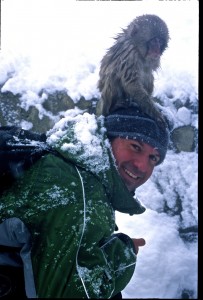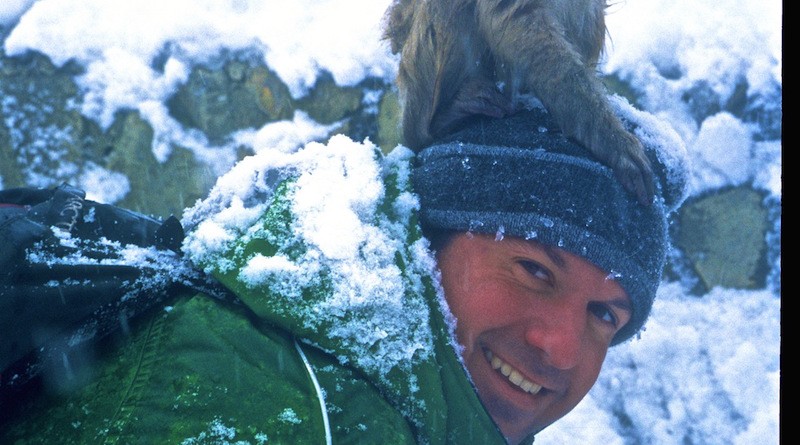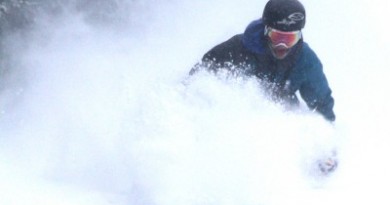Chairlift Q/A: The Wildest Kratt Brother
When he’s not traveling the world filming his Wild Kratts show, Chris Kratt might be found skiing Jay Peak or Stowe.
You never know who you will meet on a Vermont chairlift—it could be a Wild Kratt. Chris Kratt (along with his brother Martin) writes, directs and stars in PBS’ “Wild Kratts,” one of the three highest-rated shows on TV for kids 11 and under. This past year, the Kratts have been touring the country doing live shows for sell-out crowds of 3,000 to 5,000. In between touring and filming wildlife, Chris and his wife Tania Armstrong Kratt (the designer behind Stowe’s Plate restaurant) and their sons spend time at their home near Stowe.

What chairlift would we be on right now?
Right now I mainly ski Stowe, so it would probably be the Forerunner Quad. However, Jay Peak and Burke are where a lot things started for me. I grew up in New Jersey but my parents were part of a ski club so we would go up to northern Vermont each winter and ski those two mountains. They eventually bought 200 acres in the Northeast Kingdom. We lived in a pop-up trailer and tents all summer long.
Do you ski or ride?
I’m a jack of all trades: I ski, ride and telemark. Now that Aidan is 13 and rides and Nolan, 6, is learning to ski, I’m getting more time on the mountain.
How did you go from growing up in Vermont to hosting a kid’s wildlife show?
We’d spend all summer wandering in the woods, finding porcupines and bumping into moose. It was the start of our creature adventures. I studied biology in college and knew that I wanted a career that had something to do with animals, and science. I realized that there were lots of great wildlife documentaries, but nothing designed specifically for kids. So my brother Martin and I went to Costa Rica and made videos we thought would be fun. We sent the tapes out to producers and got a lot of rejections. One producer told us it was too “frivolous.” I laughed: if you’re a kid, “frivolous” is great.
You’ve made Kratt’s Creatures, Zoboomafoo and now Wild Kratts. What else?
Right now the focus is on Wild Kratts. The series explores natural history and science through the lens of the incredible ‘creature powers’ that animals possess. It’s been so popular that we’re extending the learning and fun through other media such as companion apps, books, and toys. We hope to release a movie too!
You’ve been nominated for three Emmys, Gwen Stefani came to your L.A. show, and The New York Times once called you “more popular than Springsteen in New Jersey.” What’s your secret?
We’ve always seen animals as fellow creatures, not just scientific objects. We like to learn about them the same way you’d get to know a friend.
What’s the craziest wild encounter you’ve had?
We’ve been fortunate to film a pride of lions that regularly hunts elephants, to go cave diving with Great White sharks and help orphan orangutans learn to live in the wild in Indonesia. We’ve filmed pods of wild spotted dolphins that not only wanted to play, they came up to us and wanted to copy our moves: if we did a spin, they would spin too! And one time I was scratching a manatee and she took my hand in her flippers and moved it to another part of her belly—so I just kept scratching and she leaned right into it.
What wildlife adventures do you have here in Vermont?
I once was hiking in Stowe and came upon a bobcat and two cubs. Mink are water-loving weasels that I see pretty regularly on our pond and even watched one swim under the ice, catch a frog and then eat it. You can also strap on a pair of skis and occasionally see moose if you know where to look.
Where would I be likely to see a moose in the winter?
During the winter their diet shifts to twigs and bark. So tree stands of poplar, birch, maple and willow are good places to look. In fact, the word ‘moose’ comes from the Algonquin language, meaning ‘twig eater.’
How does conservation fit into what you do?
During our first series, a little girl named Katie sent us $3.17 from her lemonade stand and asked us to please use this money to help animals. So we decided to start a not-for-profit and asked our audience—kids—what animals they wanted to help here in North America. Grizzly bears came out on top so we did a Zoo tour sponsored by the Gap Foundation and Old Navy and raised over a million dollars to protect critical habitat for bear and other wildlife. We then worked with The Nature Conservancy to establish Grizzly Gulch, a wildlife refuge on the eastern edge of the Rockies


